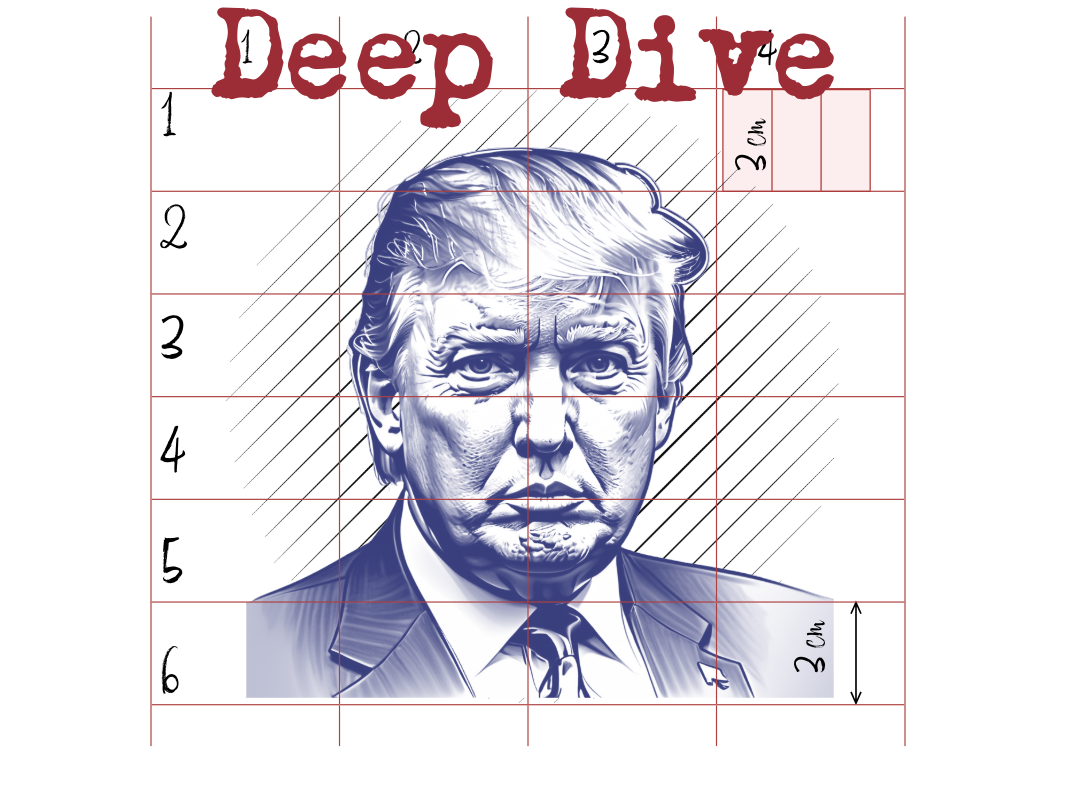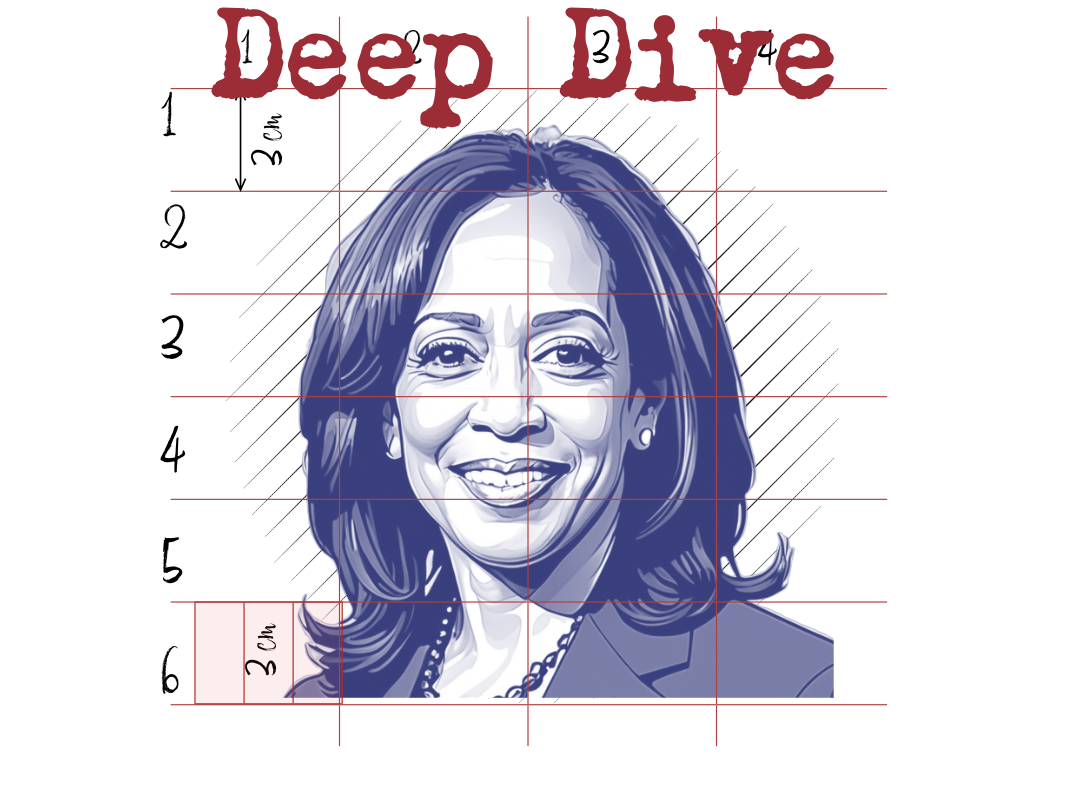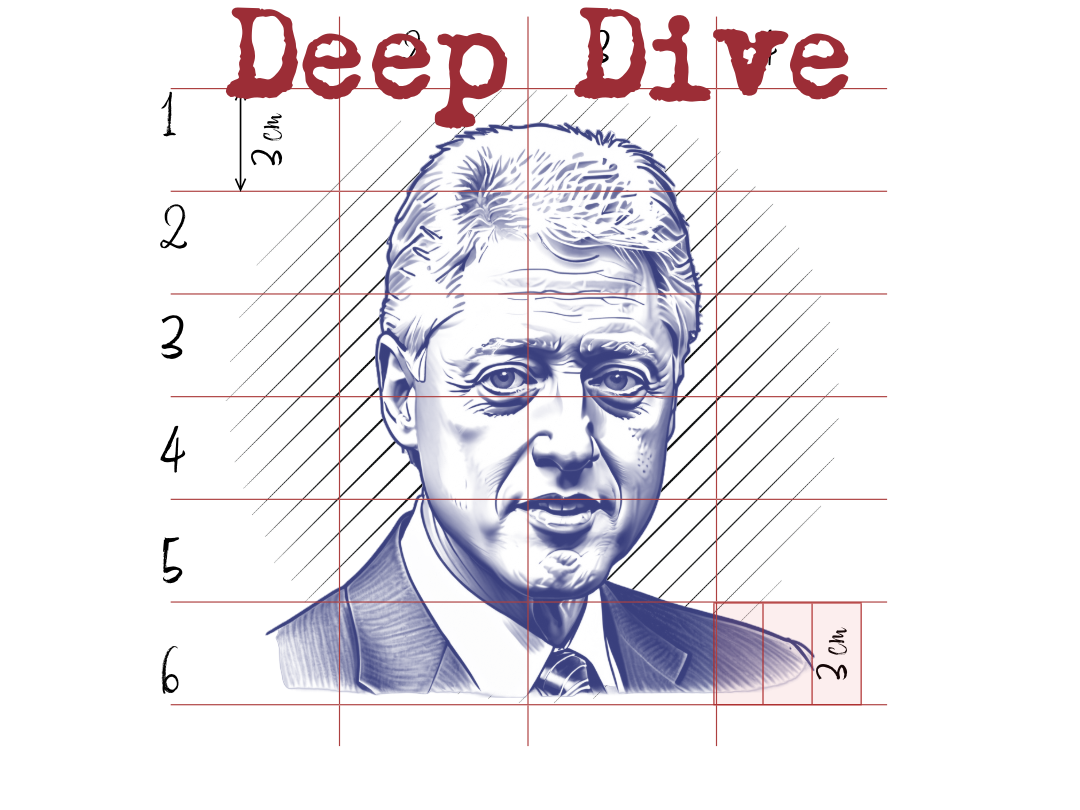Article from USA Today | Oct 26, 2024
Article from USA Today | Oct 23, 2024
To analyze potential bias in the way Donald Trump is presented in the USA Today article titled "Aliens, North Korea, election interference: Takeaways from Trump's Rogan appearance" by Karissa Waddick, I applied the following methodology:
Objective:
To identify any potential bias (positive or negative) in how Donald Trump is presented in the article by assessing the language, tone, framing, and positioning
Scope:
Since the article primarily focuses on an interview between Donald Trump and Joe Rogan, I will evaluate whether Trump is portrayed in a positive or negative light and analyze how his views, actions, and statements are framed. While the article does not explicitly compare Trump with another individual, the piece does provide an in-depth look at his public persona and political positions, which will allow for an analysis of media bias in that context.
Collection of Relevant Media Samples
The primary media sample is the article itself. The article provides a breakdown of Trump’s comments on various topics, such as aliens, North Korea, election interference, and his criticisms of former colleagues like John Bolton and John Kelly.
Identify Key Bias-Related Language Indicators
Word Choice:
Negative Language: The article includes a reference to a Pentagon report debunking Trump’s comments about aliens, which could be seen as a subtle attempt to discredit his claims: “The Pentagon earlier this year released a 63-page report concluding that there was no evidence of aliens or extraterrestrial technology on Earth.”
Trump’s repeated claims about election interference are framed in the context of misinformation, with references to "debunked claims" and “unfounded concerns” regarding mail-in voting and voting machines.
His denouncement of former aides, John Kelly and John Bolton, is presented in a negative light, especially with the inclusion of their criticisms of Trump’s leadership.
Neutral to Sympathetic Tone:
Overall, the tone seems more neutral. There is a strong emphasis on Trump’s attempts to appeal to his audience, particularly his strategy to reach younger, male voters by appearing on Rogan’s podcast.
His friendly demeanor with Rogan (e.g., "I love this idea of you teaming up with Robert Kennedy") suggests a more casual, open tone.
Some of the controversial topics, such as Trump's repeated denial of election results, are handled with a degree of skepticism, but not overtly negative criticism.
Skeptical or Critical Tone:
The discussion surrounding election interference and Trump’s unfounded claims about the 2020 election is framed with skepticism, pointing out that these claims have been debunked. The word “debunked” itself signals a critical stance.
There is a sense of questioning when Trump brings up controversial claims, such as his suggestion to eliminate income tax and replace it with tariffs, which is framed in the context of economic criticism: “Some economists credit McKinley’s tariffs with plunging the U.S. government into a deficit and depression.”
Neutral Framing:
The article frames Trump as engaging in a dynamic, approachable manner with Joe Rogan, especially through their exchange on various topics like aliens and North Korea.
His policy proposals, like eliminating income taxes and his critique of the political establishment, are framed as part of his populist approach, which may resonate with his target audience (young, male voters).
Negative Framing:
The claims about aliens, while presented without direct criticism, are framed within the context of a government report that contradicts Trump’s assertions, subtly casting doubt on his credibility regarding the existence of extraterrestrials.
His repeated claims about election interference are framed within the broader context of conspiracy theories, particularly in a section that suggests that his rhetoric could be undermining faith in the election process.
Comparative Framing:
While the article doesn’t explicitly compare Trump to another individual in a direct manner, it does reference other political figures like Kamala Harris and Robert Kennedy, positioning Trump in relation to them. For example:
Kamala Harris: The article briefly mentions that Harris was in talks to appear on Rogan's podcast, but a spokesperson for her campaign denied it. This provides context but doesn't position Harris in contrast to Trump in a way that would show bias toward or against either individual.
Robert Kennedy Jr.: Trump’s comments about teaming up with Robert Kennedy Jr. are portrayed in a neutral-to-positive light. However, this is more about Trump’s strategy than a direct comparison.
Positioning within the Article:
Trump is the central figure of the article, as the piece focuses on his lengthy conversation with Joe Rogan. His views are discussed in-depth across a range of topics, which allows for a fairly broad and comprehensive portrayal.
The structure of the article provides a mix of neutral reporting on Trump's statements along with occasional skepticism regarding the veracity of some of his claims, especially around election interference.
Headlines and Subheadlines:
The headline, “Aliens, North Korea, election interference: Takeaways from Trump's Rogan appearance”, is neutral but emphasizes the broad range of topics Trump discussed. The headline doesn't use particularly loaded language, but it hints at the variety of controversial issues Trump addressed, which could influence the reader's expectations.
Compare Themes and Issues Covered
The article emphasizes Trump’s statements on aliens, North Korea, and his political criticisms, with more weight given to his foreign policy views and his framing of U.S. politics as an "enemy from within." The themes of election interference and tax policy are framed as more contentious and less credible, with a focus on debunked conspiracy theories and unsubstantiated claims.
Look for Quotes and Attribution
Positive Quotes: Trump is frequently quoted speaking confidently about his policies and views.
Critical Quotes: The article quotes Trump’s critics in a way that undermines the validity of some of his claims, particularly regarding election interference and his economic policies.
Comparison and Analysis
Bias Indicators:
Positive Bias: Trump is portrayed as engaging and humorous, and the article provides a glimpse into his thought process on various policies.
Negative Bias: Trump’s claims about election interference and aliens are met with skepticism, particularly when the article references contradictory reports from experts.
Conclusion:
The language is more neutral in terms of tone, but certain contentious issues (like election denial) are framed critically. The framing generally leaves the reader with a sense that Trump's more outlandish claims lack solid evidence.
Key Findings:
The article portrays Trump in a mixed light: it highlights his populist appeal, humor, and foreign policy views in a neutral or somewhat favorable tone, but it does not shy away from casting doubt on his more controversial positions (e.g., election fraud and alien existence).
Negative framing appears primarily in the discussion of debunked conspiracy theories and questionable economic policies, while positive framing emphasizes Trump’s engagement with his audience and his ability to connect with certain voter demographics.
Insights:
The media may be shaping public perception by presenting Trump as both charismatic and controversial. While his statements are often allowed to stand without direct rebuttal, the article uses framing techniques like referencing expert reports and critical reactions to temper the influence of his claims.
Again, to analyze potential bias in the presentation of Vice President Kamala Harris in this USA Today article titled "Harris pressed on transgender rights, potentially pardoning Trump: 5 key moments from NBC interview," I applied the same methodology as used for Trump's article. This analysis will explore language choice, tone, framing, positioning, and overall media treatment.
Objective: The goal is to assess whether Kamala Harris is presented positively or negatively in this article, and if there is any bias in the language, tone, or framing of her interview.
Scope: Focus on the language and framing used to describe Harris's actions, statements, and interview moments in comparison to other political figures, particularly Donald Trump.
Collect Relevant Media Samples
The article in question provides a detailed summary of key moments from an interview with Harris. This analysis focuses solely on this article, which is a representative sample of her media portrayal in USA Today at the time of its publication.
Identify Key Bias-Related Language Indicators
Word Choice:
Positive language:
"I think America is 'absolutely' ready for a woman of color to serve as president" – The use of "absolutely" here expresses confidence and optimism about the potential for a woman of color to lead the country.
"I think part of what is important in this election is really not only turning the page, but closing the page..." – Positive language that suggests progress and resolution.
"I believe that all people should be treated with dignity and respect, period..." – Strong language that expresses a firm and inclusive stance on human rights.
"I will never assume that anyone in our country should elect a leader based on their gender or their race" – Her statement here reinforces a positive message of equality and merit-based leadership.
Neutral language:
"Controversial exchange" – The reference to her "contentious exchange" with Hallie Jackson over transgender rights could imply tension or discomfort in the discussion, casting Harris’s response in a possible negative to neutral light.
"Sidestepped questions" – The phrase "sidestepped questions" suggests evasion or avoidance, which has a slightly negative connotation, implying Harris was unwilling to answer directly.
Tone:
The tone throughout most of the article is neutral to positive, particularly when Harris is discussing her policy positions or addressing the importance of dignity and respect for all people.
Framing:
Transgender Rights: The article frames Harris’s response to questions about transgender rights in a somewhat cautious and evasive light. The reporter highlights her lack of a specific answer about whether she believes transgender Americans should have access to gender-affirming care, which is framed as a "contentious exchange."
This could be interpreted as a negative framing, as it presents Harris as avoiding a direct stance on a topic that is particularly contentious in the 2024 political landscape.
Abortion and Pardon for Trump: Harris is presented in a firm, principled stance, particularly regarding abortion ("I don’t think we should be making concessions..."). This can be read as a strong, unwavering position, which is generally framed positively.
On the potential pardon for Trump, however, Harris is quoted as saying she "won't get into those hypotheticals." While this is a fair answer, the phrase could be interpreted as an avoidance of a difficult or polarizing topic, and could be viewed as somewhat dismissive, especially in contrast to Trump, whose criminal charges were framed as significant and scandalous.
Comparative Framing:
There is no direct comparative framing between Harris and Trump in this article. However, by discussing Harris's response to the question of a potential Trump pardon, it implicitly places her in opposition to Trump’s legal issues. The framing of Trump’s actions and charges contrasts with Harris's attempts to avoid engaging with them directly.
The "Trump's criminal charges" are framed negatively, and while Harris's decision not to engage directly is understandable, this juxtaposition may imply that she is trying to distance herself from the topic or avoid any potential fallout from taking a definitive stance.
Positioning within the Article:
The article starts with a broad overview of Harris's interview, which includes her comments about a woman of color running for president and touches on various issues like immigration, abortion, and transgender rights.
Her comments are introduced with some positive language about progress and dignity, but the more contentious moments (e.g., transgender rights) are positioned later in the article. This could be a way to introduce her with a positive image before addressing more controversial or difficult topics.
Headlines and Subheadlines:
Headline: "Harris pressed on transgender rights, potentially pardoning Trump: 5 key moments from NBC interview" – The headline is fairly neutral, focusing on the key moments of the interview. However, the mention of "pressed" in the headline subtly suggests Harris was challenged or put under pressure during the interview.
This could imply a more defensive or reactive portrayal, even though the article itself is fairly balanced in terms of tone.
Compare Themes and Issues Covered
The article emphasizes Harris’s positions on LGBTQ+ rights, abortion, and transgender issues, while also covering her responses to questions about Trump’s potential pardon.
The LGBTQ+ and transgender rights section is framed somewhat negatively, with Harris being portrayed as avoiding a direct stance.
Abortion and Trump’s potential pardon are framed more positively, with Harris’s comments about abortion rights reflecting strong, principled views. However, her unwillingness to address the pardon is portrayed more ambiguously, casting her as hesitant or unwilling to engage with that difficult question.
Quantitative Analysis (Optional)
Frequency of Terms: Words like “rights,” “dignity,” and “respect” are repeated in positive contexts. Words like “sidestepped” and “contentious” are used when discussing more controversial aspects of the interview, reflecting a more critical tone on those issues.
Comparative Word Counts: The article doesn’t dedicate significant space to a direct comparison of Harris with Trump, but there is a clear emphasis on her political positions and how they are framed.
Look for Quotes and Attribution
Harris is quoted extensively, and her statements about leadership, abortion, and dignity are given full context, allowing readers to understand her positions. However, the quotes about transgender rights and Trump’s pardonare framed with more scrutiny and less certainty.
Comparison and Analysis
Overall, the article presents Kamala Harris in a mostly positive light, emphasizing her stance on dignity, abortion, and progressivism. However, the treatment of transgender rights and the pardon question is somewhat more critical, using language that suggests hesitance, avoidance, or even controversy in her responses.
Potential Bias: The overall tone of the article seems neutral to positive, but there are moments where the coverage suggests Harris is avoiding difficult questions. This is most noticeable in her handling of the transgender rights issue and her decision not to engage with the Trump pardon question.
Conclusion
Bias: The article presents Kamala Harris in a relatively neutral light but includes some moments that could be interpreted as critical, particularly in how her responses to difficult questions (transgender rights, Trump’s pardon) are framed. While the article doesn't overtly favor one individual over another, the tone does shift when Harris addresses controversial issues. This could influence the reader’s perception of Harris as someone who avoids difficult subjects, especially compared to the more direct and controversial stance taken by figures like Donald Trump.
Implications: The subtle shifts in language—such as "sidestepped" and "contentious exchange"—may influence public perception by portraying Harris as being less clear or more evasive on key issues. However, the article does balance this with positive aspects of her political platform and views. The portrayal could affect how voters perceive Harris's leadership, particularly in a highly polarized election.








